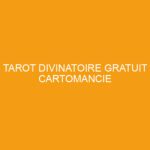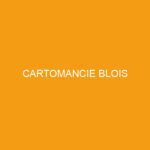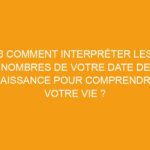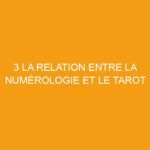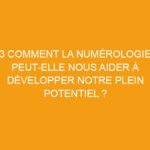
Cartomancie Signification in French: Understanding Tarot Cards
Cartomancie, also known as taromancie, is the art of fortune-telling through tarot cards. French cartomancie has a long history, and tarot cards have been used for divination in France since the 18th century. The popularity of cartomancie has grown in recent years, and tarot readers in France offer various interpretations of the cards’ symbolism.
The tarot deck consists of 78 cards, divided into the Major Arcana and Minor Arcana. The Major Arcana cards represent significant life events and experiences, while the Minor Arcana cards represent the everyday aspects of life. Each card in the deck has its own meaning, and the way the cards are arranged and read can provide insight into a person’s past, present, and future.
In this article, we will explore the meanings of the Major and Minor Arcana cards, as well as the different ways in which French cartomancie interprets the tarot deck.
The Major Arcana: Understanding Life’s Journey
The Major Arcana is made up of 22 cards that represent major life events, experiences, and spiritual lessons. In French cartomancie, the Major Arcana cards are seen as pivotal moments in a person’s journey, and they carry a great deal of weight in a reading.
Here are the 22 Major Arcana cards and their meanings:
1. The Fool (Le Fou): The Fool represents new beginnings, taking risks, and following one’s own path.
2. The Magician (Le Magicien): The Magician represents using one’s talents and skills to manifest one’s desires.
3. The High Priestess (La Papesse): The High Priestess represents intuition, mystery, and secrets.
4. The Empress (L’Impératrice): The Empress represents nurturing, abundance, and creativity.
5. The Emperor (L’Empereur): The Emperor represents authority, structure, and protection.
6. The Hierophant (Le Pape): The Hierophant represents traditions, spirituality, and guidance.
7. The Lovers (Les Amoureux): The Lovers represent relationships, choices, and harmony.
8. The Chariot (Le Chariot): The Chariot represents ambition, control, and victory.
9. Strength (La Force): Strength represents inner strength, courage, and self-control.
10. The Hermit (L’Hermite): The Hermit represents solitude, introspection, and guidance.
11. The Wheel of Fortune (La Roue de Fortune): The Wheel of Fortune represents change, cycles, and destiny.
12. Justice (La Justice): Justice represents fairness, impartiality, and balance.
13. The Hanged Man (Le Pendu): The Hanged Man represents surrender, sacrifice, and letting go.
14. Death (La Mort): Death represents transformation, change, and endings.
15. Temperance (La Tempérance): Temperance represents moderation, balance, and harmony.
16. The Devil (Le Diable): The Devil represents temptation, greed, and materialism.
17. The Tower (La Maison-Dieu): The Tower represents upheaval, change, and destruction.
18. The Star (L’Étoile): The Star represents hope, inspiration, and guidance.
19. The Moon (La Lune): The Moon represents the unconscious, emotions, and intuition.
20. The Sun (Le Soleil): The Sun represents success, positivity, and happiness.
21. Judgment (Le Jugement): Judgment represents rebirth, renewal, and redemption.
22. The World (Le Monde): The World represents completion, integration, and fulfillment.
The Minor Arcana: Finding Clarity in the Details
The Minor Arcana consists of four suits: Wands (Bâtons), Cups (Coupes), Swords (Épées), and Pentacles (Deniers). Each suit consists of ten numbered cards and four court cards: Page (Valet), Knight (Cavalier), Queen (Reine), and King (Roi).
In French cartomancie, the Minor Arcana cards are seen as the details that provide clarity to the overall reading. The cards in each suit represent different aspects of life:
– Wands: Creativity, passion, and energy.
– Cups: Emotions, relationships, and intuition.
– Swords: Thoughts, communication, and conflict.
– Pentacles: Material possessions, finances, and career.
Here are the meanings of the numbered cards in each suit:
– Ace: New beginnings, opportunities, and potential.
– Two: Partnerships, duality, and balance.
– Three: Growth, expansion, and progress.
– Four: Stability, foundations, and structure.
– Five: Conflict, challenges, and change.
– Six: Harmony, balance, and triumph.
– Seven: Reflection, choices, and evaluation.
– Eight: Transformation, change, and movement.
– Nine: Completion, attainment, and success.
– Ten: Fulfillment, abundance, and manifestation.
Here are the meanings of the court cards in each suit:
– Page (Valet): Curiosity, learning, and new beginnings.
– Knight (Cavalier): Action, change, and progress.
– Queen (Reine): Nurturing, harmony, and intuition.
– King (Roi): Leadership, authority, and power.
Different Interpretations in French Cartomancie
There are various ways to interpret the tarot deck in French cartomancie, and each reader has their own style. Some French cartomancie readers focus on the traditional meanings of the cards, while others incorporate their own intuition and insights into their readings.
One popular interpretation technique in French cartomancie is the use of positional spreads. A positional spread is a specific layout of the cards that corresponds to different aspects of the person’s life. For example, a simple three-card spread might represent the past, present, and future, while a more complex ten-card spread might represent different areas of life, such as relationships, career, and spirituality.
Another popular interpretation technique is reading the cards in pairs or groups, known as “stringing” or “chaining” the cards. This technique involves looking at how the cards relate to each other, rather than their individual meanings.
French cartomancie also includes the use of reversed cards, which are cards that appear upside down in a reading. In traditional tarot, reversed cards can represent obstacles or challenges, while upright cards represent positive energy and potential. In French cartomancie, reversed cards might have a different meaning depending on the reader’s interpretation.
FAQs
Q: Can anyone learn cartomancie?
A: Yes, cartomancie is a skill that can be learned with practice and dedication. However, it is important to approach cartomancie with an open mind and respect for the art.
Q: What should I expect in a cartomancie reading?
A: A cartomancie reading can provide insight into your past, present, and future, and offer guidance on various aspects of your life. Readers may use different techniques and spreads to interpret the cards. It is important to approach the reading with an open mind and be willing to explore the information that is presented.
Q: Is cartomancie the same as other forms of divination, such as astrology or numerology?
A: No, cartomancie is a unique form of divination that uses tarot cards. While other forms of divination may use different tools or techniques, cartomancie is focused specifically on interpreting the symbolism of the tarot deck.
Q: Are there any rules or guidelines for cartomancie?
A: While there are traditional meanings for the cards, there are no set rules for interpreting them in cartomancie. Each reader may have their own style and approach, so it is important to find a reader who resonates with you.
Q: Is cartomancie a form of magic or witchcraft?
A: While some practitioners may use cartomancie as part of their spiritual or magical practice, cartomancie itself is simply a tool for divination and does not require any particular belief system.
Résumé de l’article sur « cartomancie signification « :
Cartomancie, également connue sous le nom de taromancie, est l’art de la divination à travers les cartes de tarot. Les tarots ont été utilisés pour la divination en France depuis le XVIIIe siècle et la popularité de la cartomancie a augmenté ces dernières années. Les cartes de tarot se composent de 78 cartes divisées en arcanes majeures et mineures. Les arcanes majeures représentent des événements et des expériences significatifs de la vie, tandis que les arcanes mineures représentent les aspects quotidiens de la vie. Dans la cartomancie française, les cartes sont interprétées de différentes manières, en utilisant différentes techniques et répartitions.

